
Alex Wong/Getty Images News/Getty Images
Alcohol-based hand sanitizers like Purell are an effective alternative to washing your hands with soap and water, the Mayo Clinic says. They reportedly kill roughly 99.99 percent of germs known to cause illness. However, not all hand sanitizers are alike, largely because of their differing concentrations of alcohol. This can raise questions about whether or not Purell is effective in killing the necessary germs.
Alcohol Concentration
For any hand sanitizer to be considered effective, it must contain at least 60 percent alcohol, according to the Mayo Clinic and the U.S. Food and Drug Administration. The manufacturer of Purell lists the concentration of alcohol for its hand sanitizer at 65 percent, meaning that it should be effective at killing 99.99 percent of bacteria, viruses and other microbes.
Effectiveness
Just because Purell meets the alcohol requirement doesn't necessarily mean it will kill the majority of germs on your skin. The product must be applied properly to work effectively. After applying the antiseptic, your hands should remain moist for 10 to 15 seconds as you rub them together. If they dry sooner than this, you haven't used enough and should reapply.
Dirt and Other Substances
If your hands are visibly dirty, the alcohol in the antiseptic gel won't necessarily be as effective. Even at a concentration of 65 percent alcohol, the product isn't able to penetrate dirt, feces, blood or bodily fluids, according to the New York Times. The pathogens found in these substances can remain alive after the alcohol-based hand sanitizer is applied. It's best to wash your hands with soap and water in these situations.
Other Products
Although Purell contains 65 percent alcohol, other versions may contain far less. If generic hand sanitizers are advertised as alternatives to Purell, make sure they contain at least 60 percent alcohol. Any less and the antiseptic gel just moves the bacteria, viruses and other microbes from one area of the skin to another. They can lead to passing the germs from your skin to another object or person.
Hand Washing
If soap and water is available, the Centers of Disease Control and Prevention recommends this method as the first choice for cleaning your hands. Hand sanitizers like Purell are best used when you can't get to soap and water.
Related Articles

Homemade Foaming Hand Sanitizer
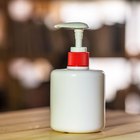
Facts About Hand Sanitizers

Alternatives to Green Soap

How to Remove Betadine From the Skin
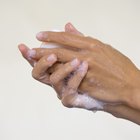
Ingredients in Hand Soap

How Does Soap Kill Germs?

Cleansers for Rosacea That Unclog Pores

Effectiveness of Non-Alcohol Hand ...
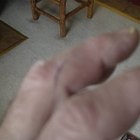
How to Get Pen Ink Off of Hands
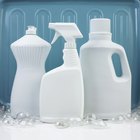
Difference Between Soap & Synthetic ...

Can You Mix Lotion With Benzoyl ...

Alcohol Content: Proof vs. Percentage ...

Ingredients in Curel Lotion

How to Remove Silicone Sealant From ...
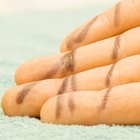
How to Get Permanent Marker Off of Skin

Homemade Nail Glue Remover

How to Sterilize Eyeglasses

The Ingredients in Germ X Hand Sanitizer
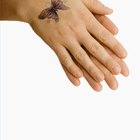
How to Tattoo Hands

How to Take Care of Wrinkled Hands
References
- Mayo Clinic: Hand Washing--Do's and Don'ts
- Mayo Clinic: Germs - Understand and Protect Against Bacteria, Viruses and Infection
- U.S. Food and Drug Administration: Personal Protective Equipment
- New York Times: Hand Sanitizers, Good or Bad?
- Centers for Disease Control and Prevention: Hand-Washing Recommendations to Reduce Disease Transmission from Animals in Public Settings
Writer Bio
Based in Minneapolis, Minn., Dana Severson has been writing marketing materials for small-to-mid-sized businesses since 2005. Prior to this, Severson worked as a manager of business development for a marketing company, developing targeted marketing campaigns for Big G, Betty Crocker and Pillsbury, among others.
Photo Credits
Alex Wong/Getty Images News/Getty Images